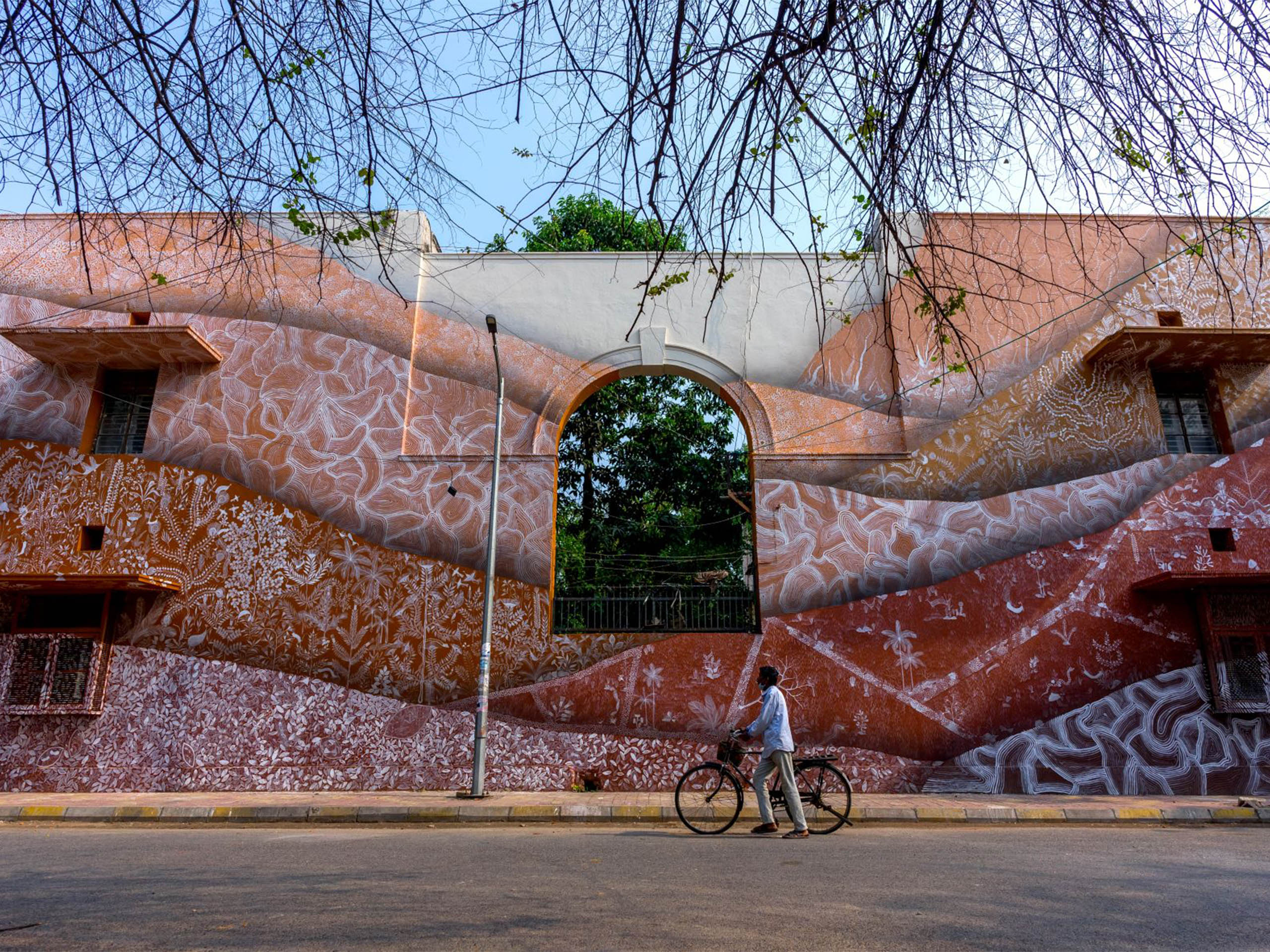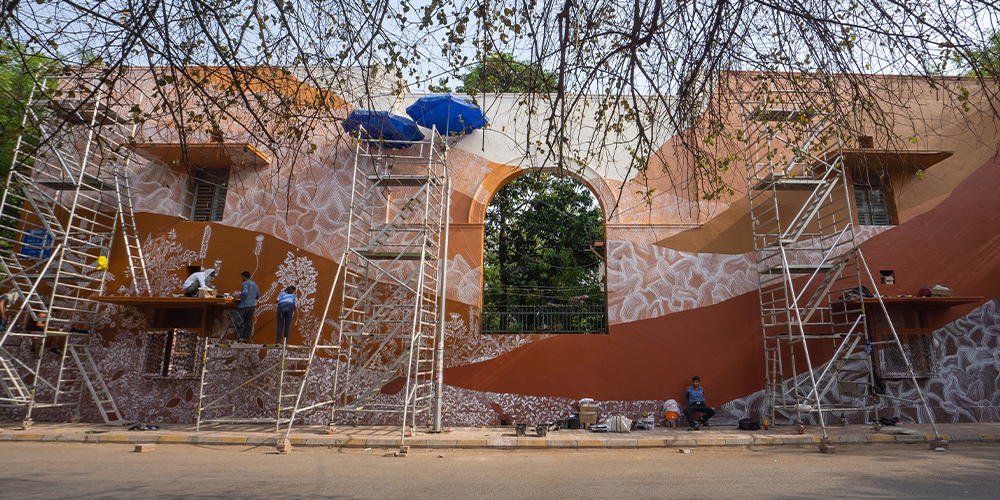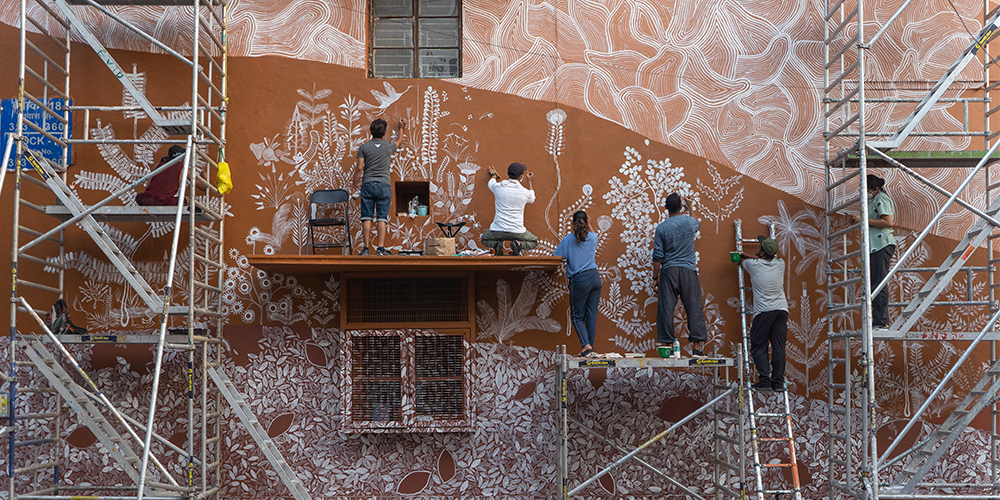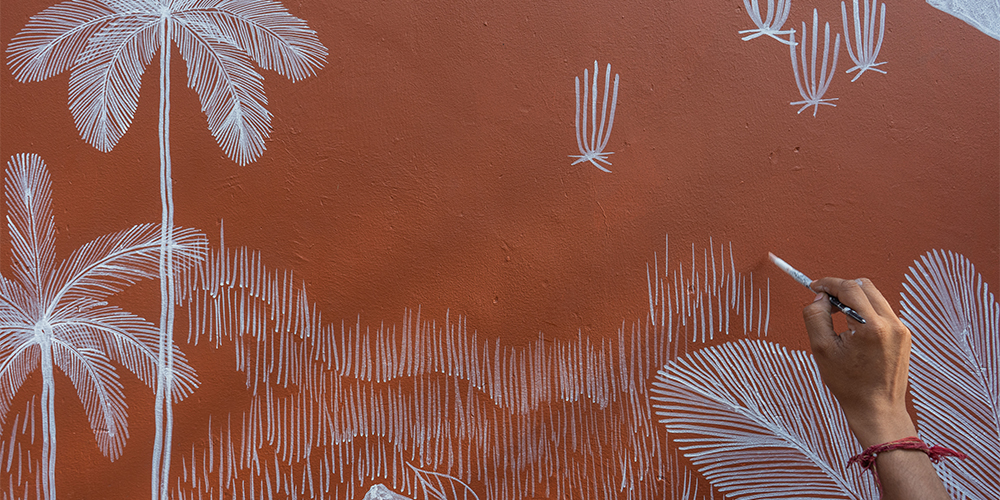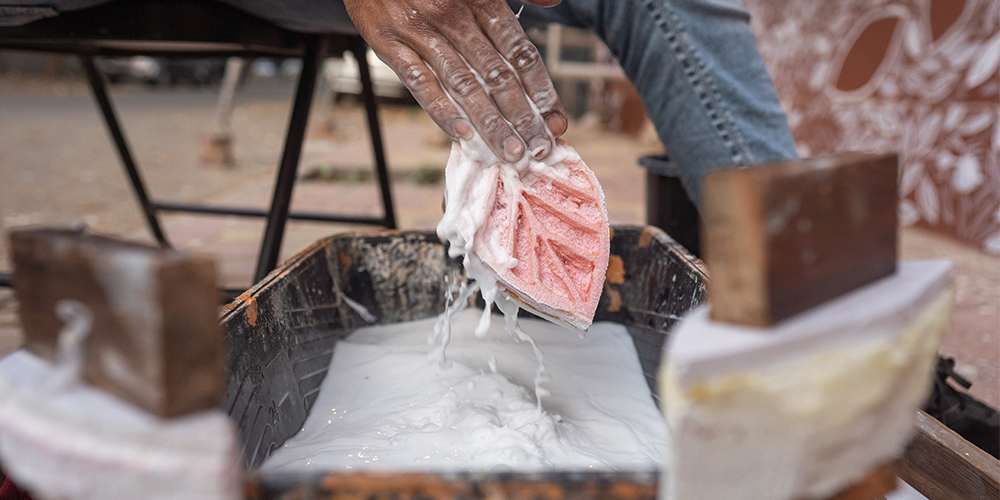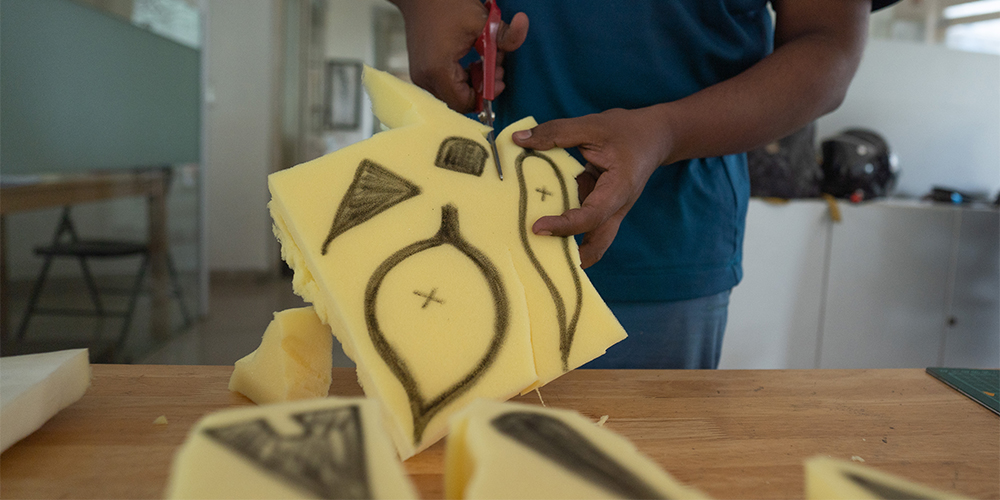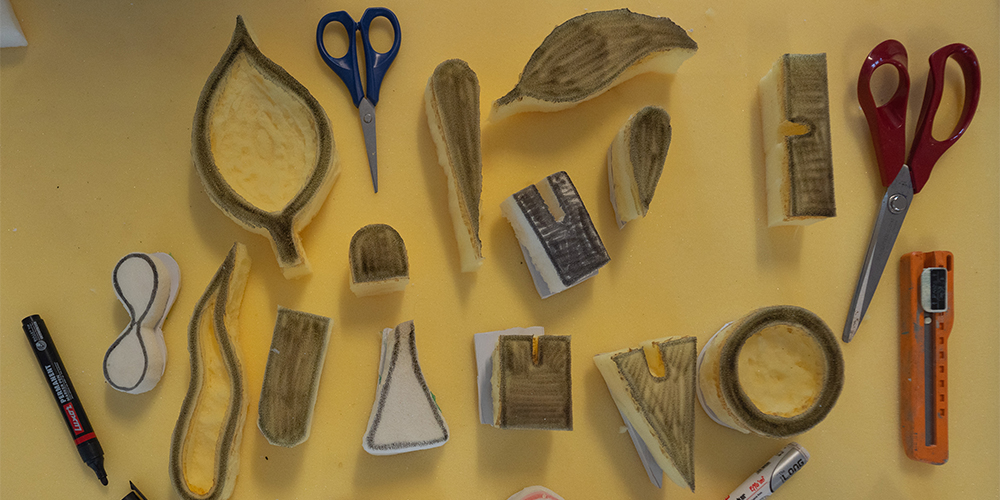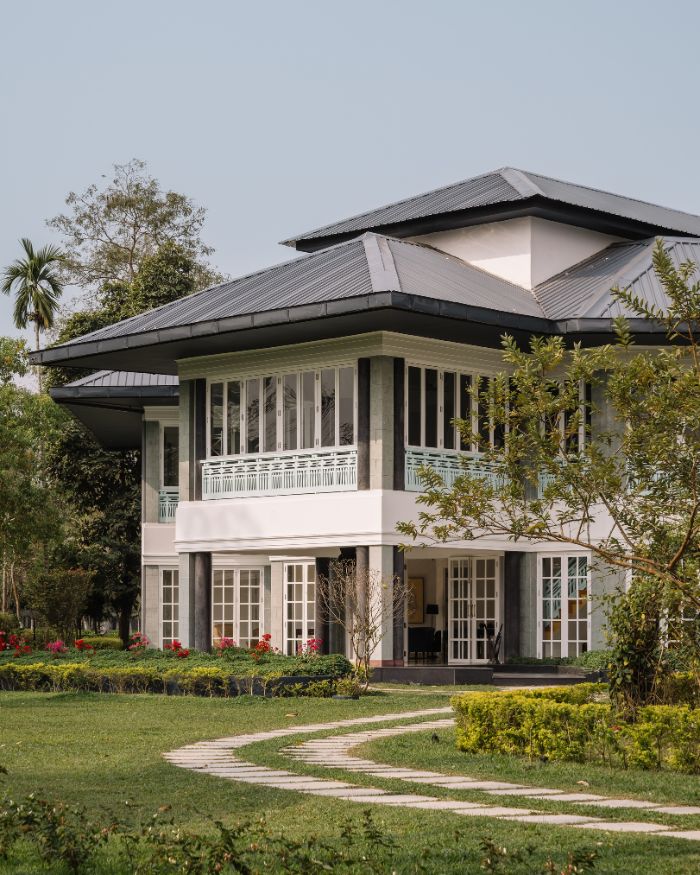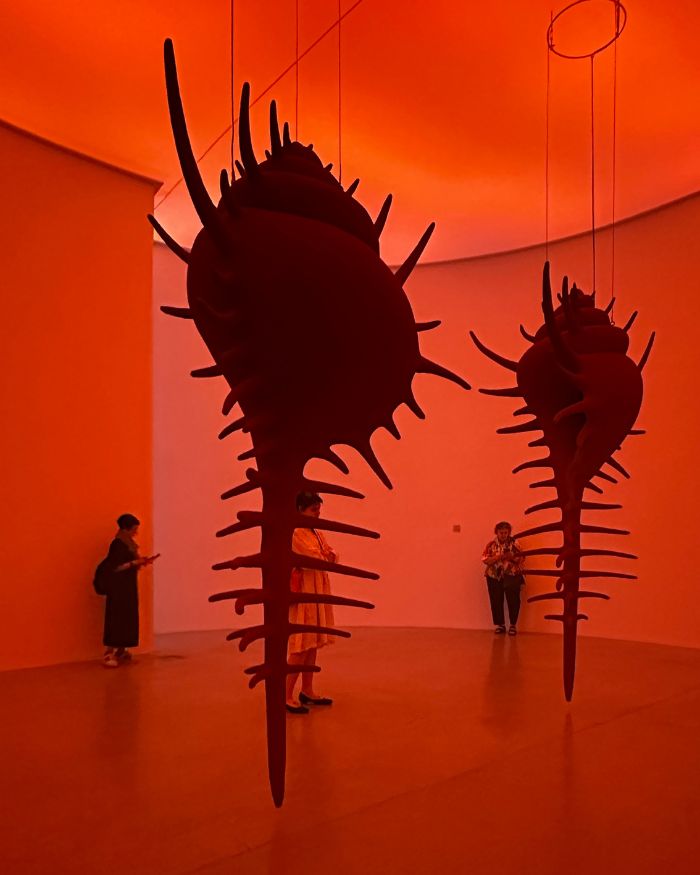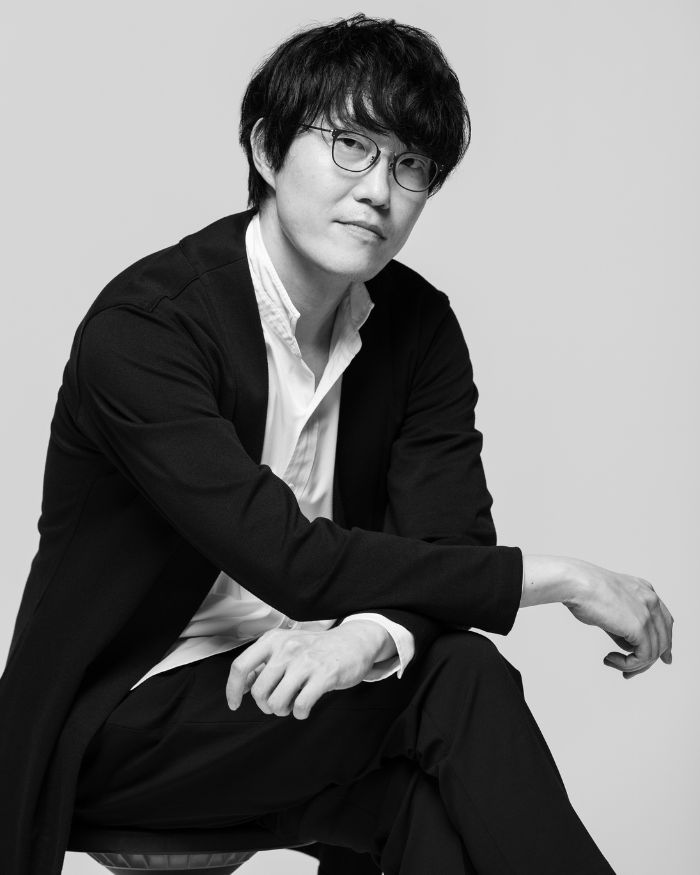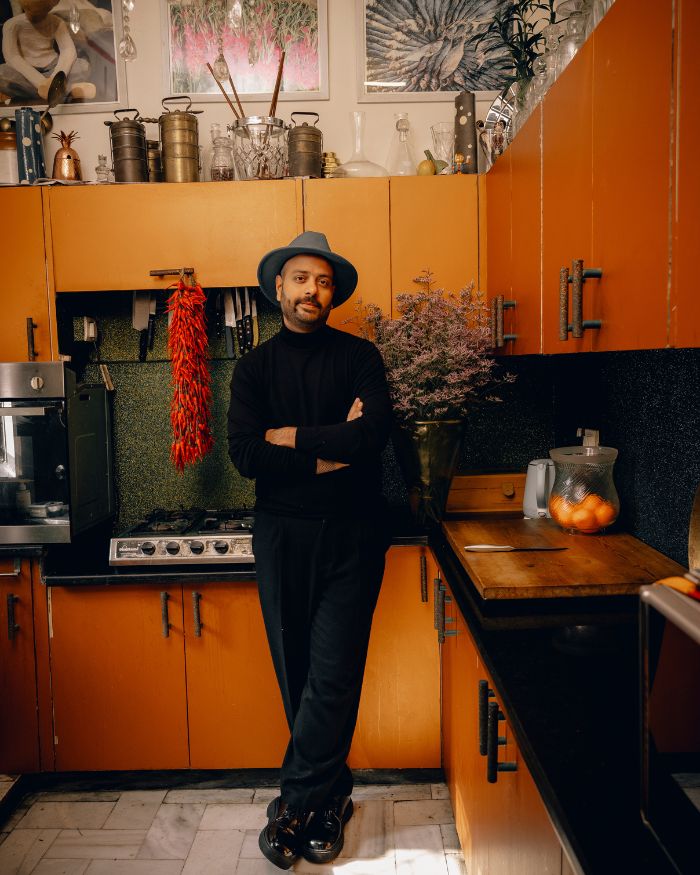Is art for all or the subject of admiration of a select few? The long-debated question requires an equally detailed analysis.
Weighing in, St+art India Foundation in collaboration with Asian Paints launched, ‘From Craft to Contemporary’—a creative public art project open to all. Located in Lodhi Art District, New Delhi, the second edition features a collaboration with Warli artist duo Mayur and Tushar Vayeda.
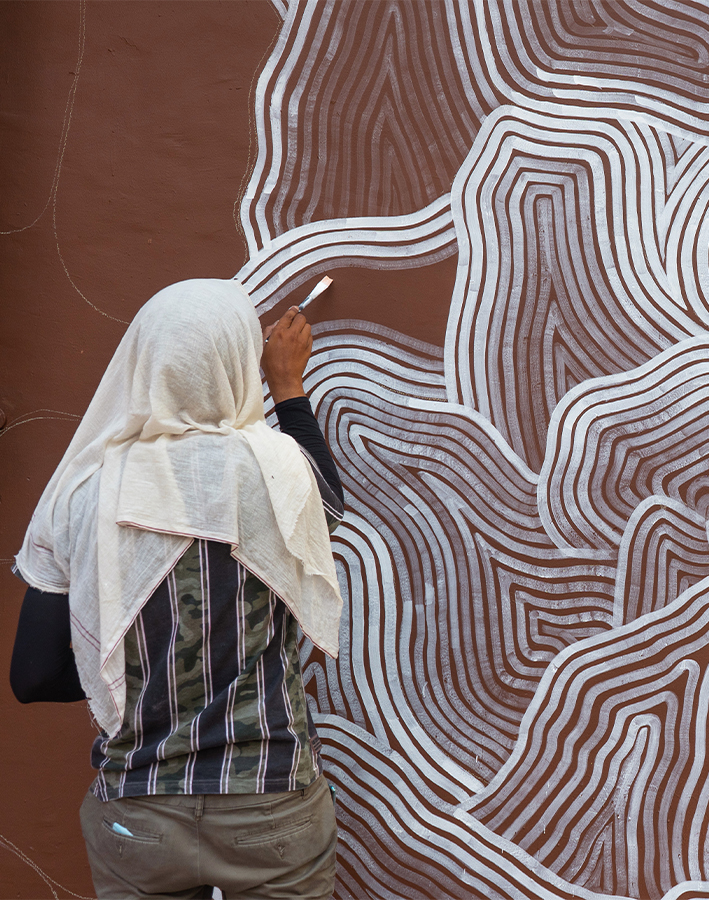
Elaborating on the ethos behind the project, Amit Syngle, CEO & MD Asian Paints Ltd divulges, “India is known for its varied cultural and artistic heritage which has survived and evolved through generations and time. Each art form is unique and laudable in itself. Through this initiative, we endeavour to bring indigenous artists to the forefront by contemporizing their art form while giving them direct exposure to a global audience.”
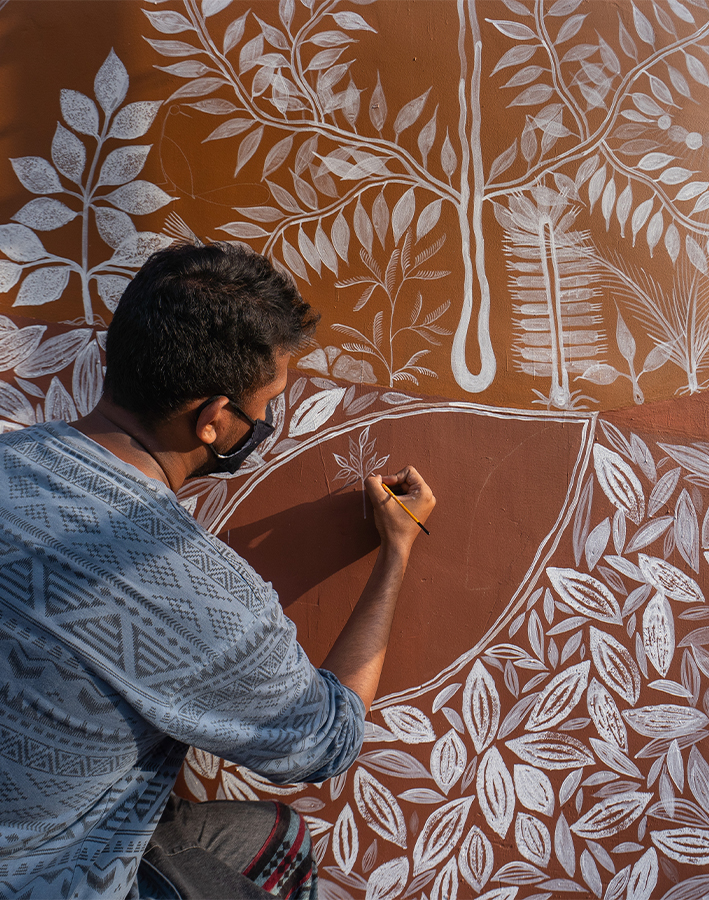
He further emphasises, “Comprehensive research has gone behind bringing this project to life which we are showcasing through this contemporary labyrinth of art. We started this residency project in 2019 by using stencils to create a Gond art mural produced by Padma Shri awardee, Bhajju Shyam. I’m certain this project will strike a chord with onlookers and art connoisseurs.”
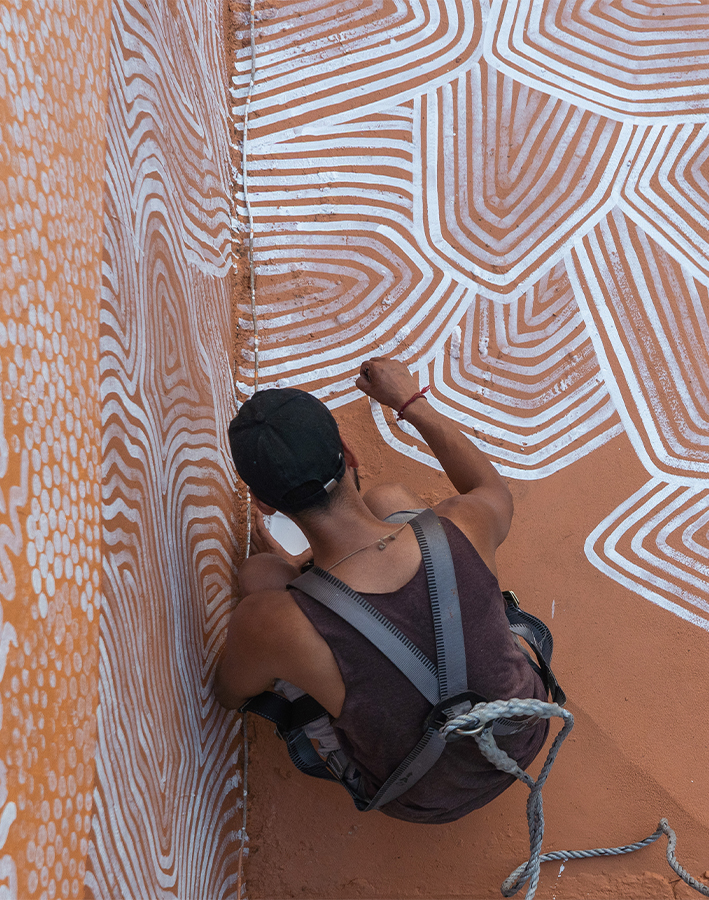
With the cooperation of a curatorial team, the campaign aims to reinterpret the traditional art form through the lens of new and imaginative techniques. To meticulously rekindle the richness of Warli paintings, the project was executed in three stages across three states.

Phase one: Maharashtra
Commencing in Ganjad, the hometown of the Vayeda brothers, the primary focus was a first-hand experience of the Warli community and tradition. The team thoroughly studied the origin of the art form, tracing its history back to 2500 BCE, within the Western Ghats of Maharashtra.
Formerly painted on walls using rice flour and bamboo brushes, the art form originated as a celebratory expression during the wedding and harvest season. Adapting and improvising, artists from Ganjad began to capture the community and its cultural nuances on canvas. Pioneering on, Mayur and Tushar continue to experiment with new mediums, making Warli more accessible.
“While there have been several attempts to rejuvenate Warli in the past, this is our attempt to infuse a new dimension into it. With a rigorous month-long process, we’ve collectively build new techniques that the community can utilise in their future work, ensuring the longevity of this collaboration,” reveals Hanif Kureshi, Co-Founder and Creative Director, St+art India Foundation
Phase two: Goa
After thoroughly documenting the practice, the process phase of the endeavour began in St+art’s studio in Goa. Scouting innovative formats to translate iconographic elements such as the flora and fauna found in the village, the team developed a narrative that would highlight the nuanced aesthetic of the folk art on a mammoth scale.
Phase three: Delhi
Executing the mural in Delhi in four months/weeks? was going to be a herculean task. This is where St:art’s in-house graphic designers and art directors came in to collectively experiment with time-saving techniques—from stamping to stencils to rollers. Despite the harsh weather conditions, the dedicated duo accomplished the task better than visualised.
Amit Syngle, CEO & MD Asian Paints Ltd. says, “India is known for its varied cultural and artistic heritage which has survived and evolved through generations and time. Each art form is unique and laudable in itself. Through St+art Residency ‘From Craft to Contemporary, we endeavour to bring indigenous artists to the forefront by contemporizing their art form while giving them direct exposure to a global audience. Comprehensive research has gone behind bringing this project to life which we are showcasing through this contemporary labyrinth of art. We started this residency project in 2019 by using stencils to create a Gond art mural in Lodhi Art District and now we are focusing on Warli art created by artists who are making this ancient cultural art accessible to the world. I’m certain this project will strike a chord with onlookers and art connoisseurs.”
What the Warli mural denotes…
An abstract illustration of the Sahyadri valley, the homeland of Warli, the mural renders to reality the ever-morphing mountainous range with corresponding earthy colours. Each of the layers portray a different element from earth to water to fire. The patterns are painted using custom-made stamps and rollers cut and carved in diverse shapes to add an organic touch to the project.
‘From Craft to Contemporary’ echoes the importance of archiving our Indian heritage and providing a platform to the neglected voices in the art fraternity. Making art more inclusive and accessible, the St+art India Foundation and Asian Paints initiative attempts to reintroduce indigenous art forms into the realm of the urban aesthetic.

